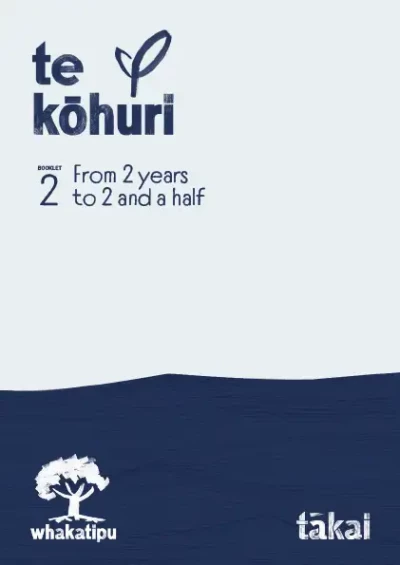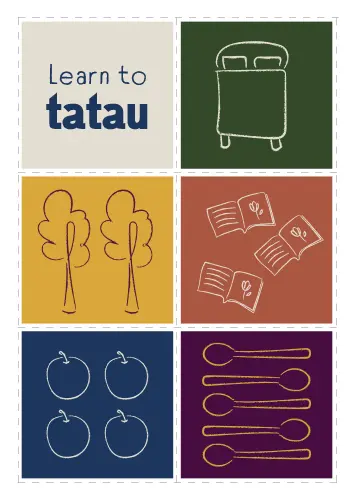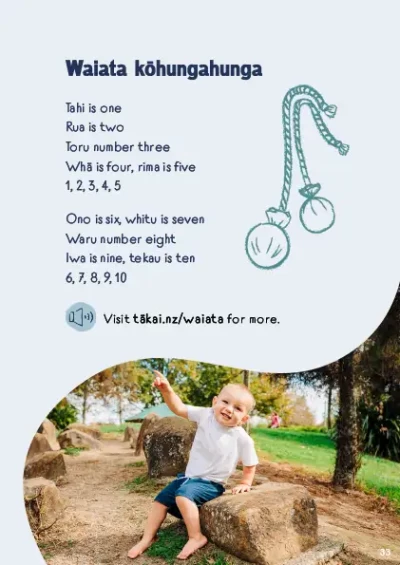
Early maths – counting
Children often learn to count through the numbers 1 and 2. There are many counting games that whānau can play with tamariki in everyday life.
Learning to count usually starts with rote learning – learning the names of numbers off by heart. Tamariki often enjoy reciting or singing number songs – often without any understanding of what numbers represent.
Ask whānau:
- What’s happening in this cartoon?
- Does your child know any numbers?
- What do you think they mean when they use numbers?
- Where do you think they learned them?
Learning steps
Children start learning to count by understanding the meaning of 1 and 2.
There are lots of opportunities to count with children in everyday life. A child may even be able to count, that is, say the numbers in the right order. But it will take lots of experiences – practice, fun, games, talking and playing – before they actually understand that 1 refers to 1 thing and 2 refers to 2 things and so on.
Whānau can let their child learn by doing. Give them opportunities to play, sort and match objects. Give them ideas and language rather than trying to force them to actually count. Maths and ideas about numbers are everywhere.
Keep it fun. It’s not a lesson to be drilled. Try counting steps, plates on the table, spoons by the plates, toothbrushes in the bathroom, dolls, toys, cars, fingers, arms and legs. ‘One for me’ and ‘one for you’ and ‘one for teddy’.
Play song
Tahi is one
Tahi is one, rua is two, toru number three
Whā is four, rima is five - 1, 2, 3, 4, 5
Ono is six, whitu is seven, waru number eight,
iwa is nine, tekau is ten - 6, 7, 8, 9, 10
Learning steps
Children start learning to count by understanding the meaning of 1 and 2.
There are lots of opportunities to count with children in everyday life. A child may even be able to count, that is, say the numbers in the right order. But it will take lots of experiences – practice, fun, games, talking and playing – before they actually understand that 1 refers to 1 thing and 2 refers to 2 things and so on.
Whānau can let their child learn by doing. Give them opportunities to play, sort and match objects. Give them ideas and language rather than trying to force them to actually count. Maths and ideas about numbers are everywhere.
Keep it fun. It’s not a lesson to be drilled. Try counting steps, plates on the table, spoons by the plates, toothbrushes in the bathroom, dolls, toys, cars, fingers, arms and legs. ‘One for me’ and ‘one for you’ and ‘one for teddy’.
Ideas for maths conversations
Here are some ideas for ‘maths conversations’ that parents can have during play with their child or alongside daily activities.
- ‘Let’s have the same number of strawberries.’
- ‘We can cut the apple in 2 pieces. Half for you and half for me.’
- ‘Shall I cut your bread into 2 pieces or 4?’
- ‘Do you think these crackers will all fit in this container?’
- ‘Let’s put all the red blocks together.’
- ‘Do you want 1 more or 2 more?’
There are many songs, finger plays, rhymes, activities and games for learning about numbers and counting.
Try an activity
Counting – tatau
Counting is a chance for tamariki to get interested in counting things in their daily lives and start to remember the order of number words used in counting, through repetition.
Helpful resources for whānau
-
Talking, reading, drawing and counting
Ministry of Education
Tips for learning at home through talking, reading, drawing and counting. The golden rule is keeping it fun for everyone.
 pdf 12 MB
pdf 12 MB













